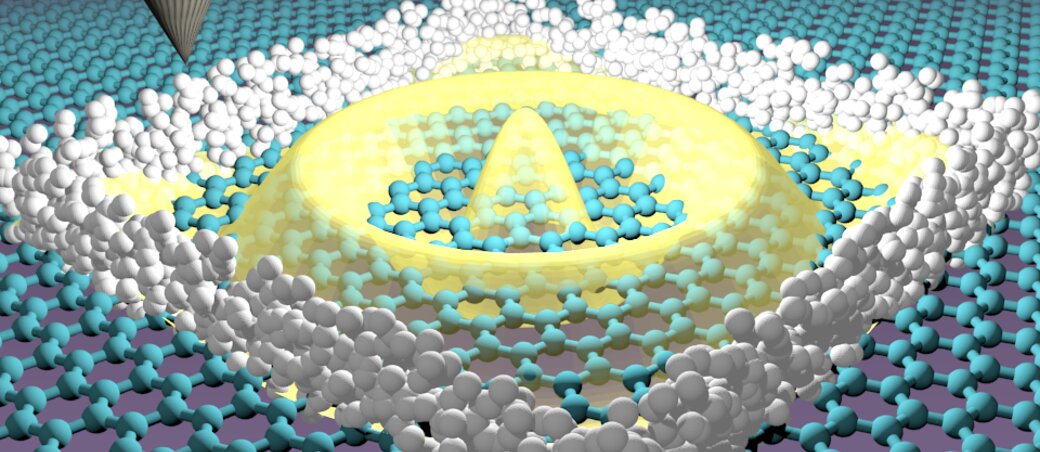

Credit: Aalto University
Graphene’s unique two-dimensional structure means that electrons travel through it differently than in most other materials. One consequence of this unique transport is that applying a voltage does not stop the electrons as it does in most other materials. This is a problem, because to make useful applications of graphene and its unique electrons, such as quantum computers, it is necessary to be able to stop and control the graphene electrons.
An interdisciplinary team of scientists from the Autonomous University of Madrid (Spain), the Grenoble Alpes University (France), the International Laboratory of Iberian Nanotechnology (Portugal) and the University of Aalto have solved this long-standing problem. The team included experimental researchers Eva Cortés del Río, Pierre Mallet, Héctor González-Herrero, José María Gómez-Rodríguez, Jean-Yves Veuillen and Iván Brihuega and theorists such as Joaquín Fernández-Rossier and José Lado, assistant professor in the department of Applied Physic. at Aalto
The experimental team used atomic bricks to build walls capable of stopping graphene electrons. This was accomplished by creating atomic walls that bound the electrons, leading to structures whose spectrum was compared to theoretical predictions, showing that the electrons were confined. In particular, engineering structures were found to result in near-perfect confinement of electrons, as evidenced by the emergence of sharp resonances from quantum wells with a remarkably long life span.
The work, published this week in Advanced materials, demonstrates that the impenetrable walls for graphene electrons can be created by the collective manipulation of a large number of hydrogen atoms. In the experiments, a scanning tunnel microscope was used to construct artificial walls with sub nanometric precision. This led to arbitrarily complex graphene nanostructures, with dimensions ranging from two nanometers to one micron.
Importantly, the method is nondestructive, allowing researchers to erase and rebuild nanostructures at will, providing an unprecedented degree of control for creating artificial graphene devices. Experiments show that designed nanostructures are capable of perfectly confining graphene electrons in these artificially designed structures, overcoming the critical challenge imposed by the Klein tunnel. Ultimately, this opens up many new and exciting possibilities, as nanostructures make graphene quantum dots that can be selectively coupled, opening up possibilities for artificially designed quantum matter.
Flatter graphene, faster electrons: technique flattens corrugations in graphene layers to improve samples
Eva Cortés – del Río et al. Quantum confinement of Dirac quasparticles in graphene modeled with sub nanometric precision, Advanced materials (2020). DOI: 10.1002 / adma.202001119
Provided by Aalto University
Citation: Team develops a method to trap elusive electrons (2020, June 29) retrieved on June 29, 2020 from https://phys.org/news/2020-06-team-method-elusive-electrons.html
This document is subject to copyright. Other than fair dealing for private research or study purposes, no part may be reproduced without written permission. The content is provided for informational purposes only.